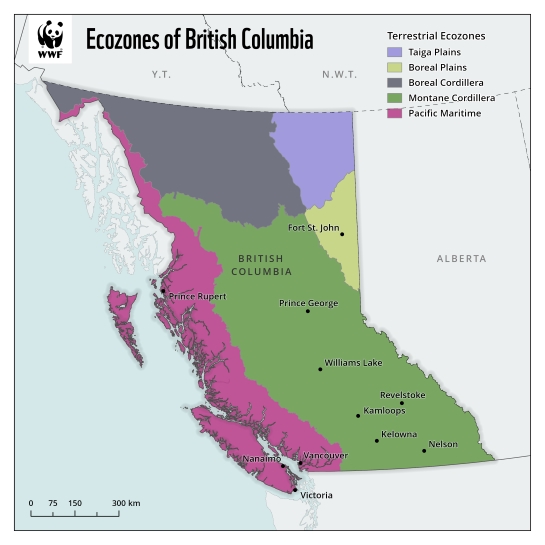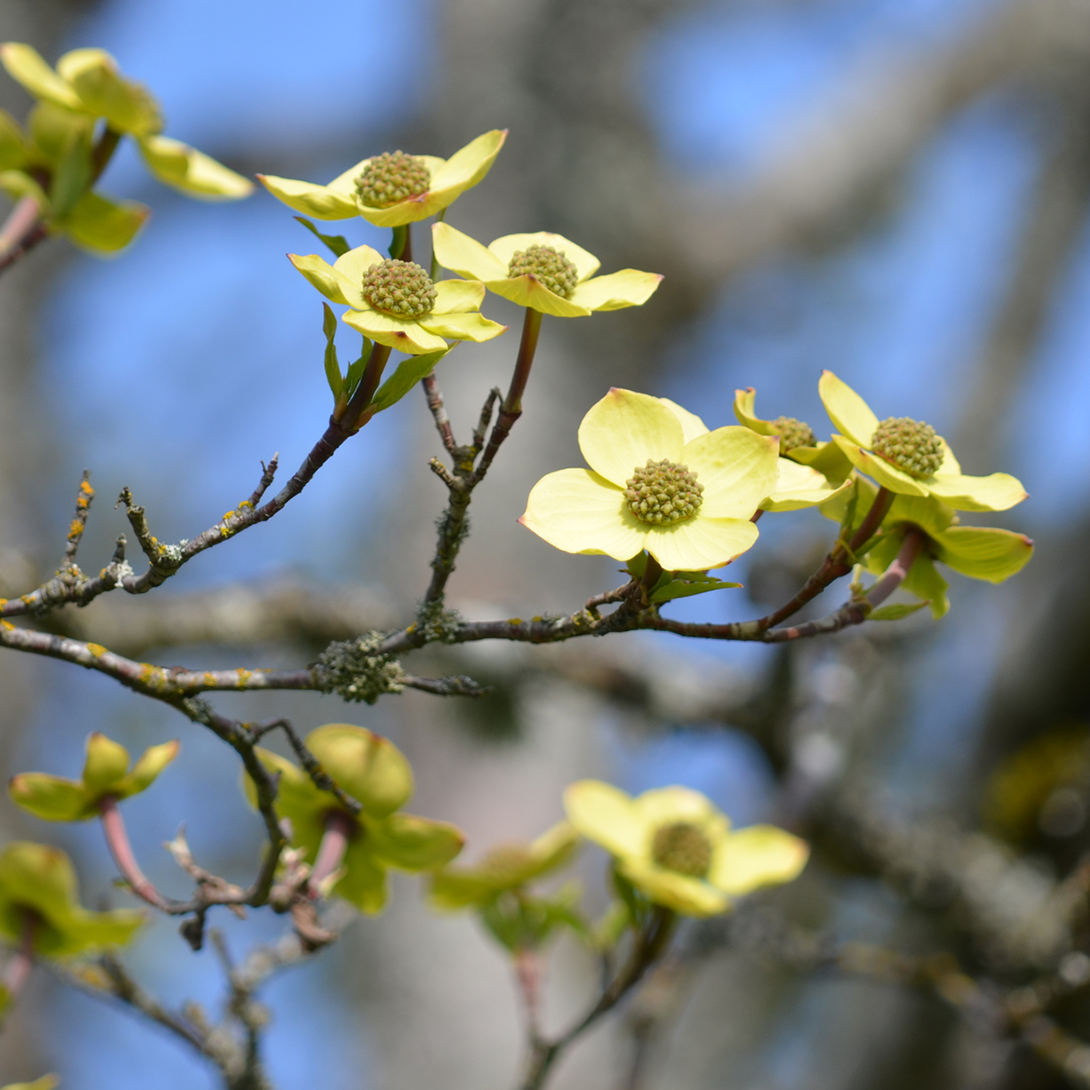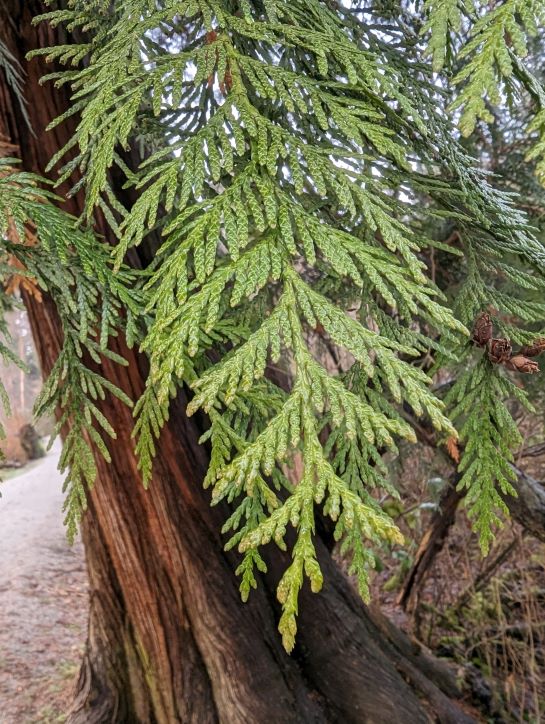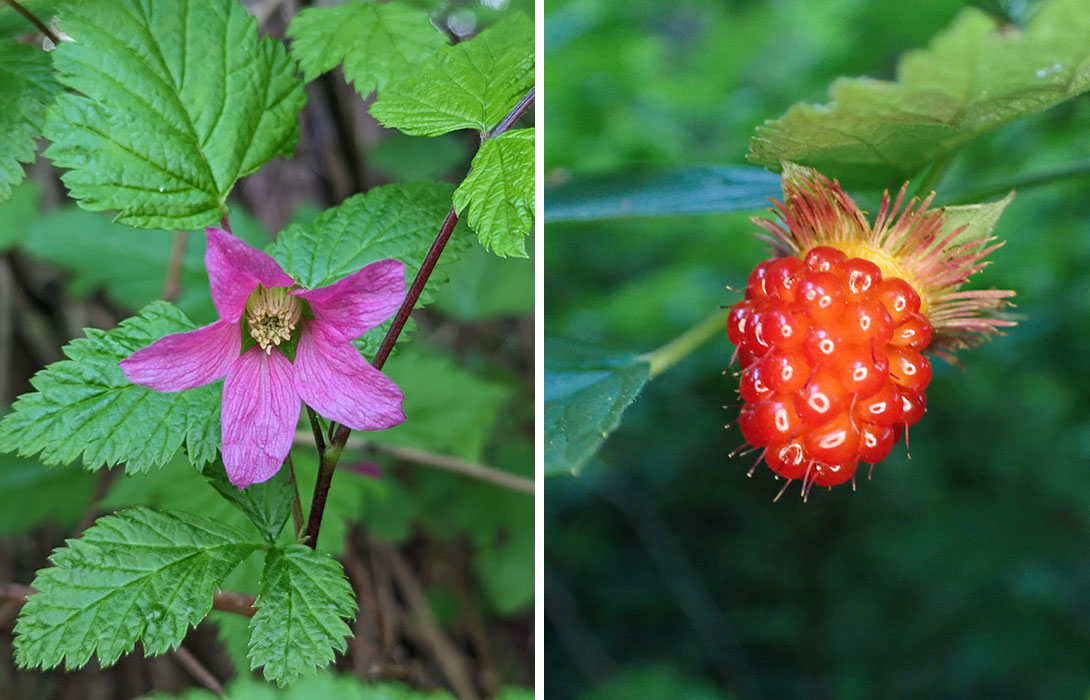B.C.’s native plants: useful, beautiful and sometimes tasty!
B.C. has a well-deserved reputation as a natural paradise — hiking among the many peaks can yield glimpses of iconic mountain goats and ptarmigan while coastal routes can lead to sightings of killer whales, sea lions and more.

Those who live and/or play here get to experience the awesomeness of its landscapes, which span five unique ecozones (see map) and include over 3,500 species of plants.
Unfortunately, this paradise is under pressure from habitat loss, climate change, invasive species and other factors. But if you live here, you can help nature out by growing native trees and plants like the examples below.
To learn about native plants from other provinces, check out our blogs for Alberta, Saskatchewan, Manitoba, Quebec and New Brunswick.
Pacific dogwood — B.C.’s provincial flower
Pacific dogwood (Cornus nuttallii) is a deciduous tree with creamy flowers. The blossoms have from four to six bracts (specialized leaves that look like petals) surrounding a central cluster of small flowers.
Native to western North America from southern B.C. down to California, Pacific dogwood can grow up to 20 metres tall and prefer moist, well-drained soil and temperatures above the frost point.
Growing tips
If you add a Pacific dogwood to your garden, ensure that it has space to grow up and outwards without other trees blocking its light; moderate sun supports healthy growth. These dogwoods can enhance your landscape with beautiful changes through the growing season: white blossoms in spring (and sometimes a second time in fall), red spherical fruit in summer or fall and bright green leaves that turn orange-red in fall.
Benefits for wildlife
Over 35 species of birds, including the pileated woodpecker and cedar waxwing, enjoy the fruits produced by this tree from September to October. Elk, deer, bears and beavers often dine on its shoots, twigs and leaves. Pacific dogwood also provides nesting spots and shelter for small mammals and birds.

Western red cedar — BC’s provincial tree
This majestic provincial emblem is native to the Pacific coast from southeast Alaska to northern California. For thousands of years, coastal First Nations have been harvesting this tree using sustainable techniques and using almost every part of it: the trunk for longhouses, totem poles and canoes; roots for water-proof baskets; and bark for clothing, blankets and ropes. This species also plays an important role in the spiritual practices and creation stories of these peoples.

The western red cedar (Thuja plicata) can grow up to 70 metres tall and seven metres in diameter and live for over 1,000 years. Pacific Rim National Park Reserve on Vancouver Island is home to Canada’s largest red cedar, the Cheewhat Giant, estimated to be up to 2,000 (!) years old.
This coniferous (seed cone-producing) evergreen is characterized by vertically grooved, red-brown bark and bright to dark green scaly leaves arranged in a fern-like shape. Western red cedar sheds yellow pollen in the spring and produces seed cones that ripen in the fall.
Growing tips
This red cedar, like many species native to B.C., enjoys moist environments and thrives in old-growth rain forests. It grows to suit its environment, getting wider or taller depending on the amount of space and sunlight available.
While western red cedar is reasonably easy to grow from seeds or cuttings, it’s also commonly available in garden centres. Note that these trees can grow fast — before growing, make sure you either have lots of room or enjoy trimming hedges!
Benefits for wildlife
As you can imagine, a tree that grows up to seven metres wide can provide habitat for a lot of wildlife. Birds, like yellow-bellied sapsuckers, tree swallows and swifts, as well as small mammals, can nest or live in tree cavities. Bears, skunks and raccoons also use trunk recesses for shelter.
Saplings and foliage provide food for deer and elk. In fact, on the islands of Haida Gwaii, introduced Sitka black-tailed deer sometimes eat so much cedar that they prevent new saplings from growing and negatively impact the archipelago’s native forest ecosystem.
Salmonberry — B.C.’s (unofficial) provincial berry
The lovely salmonberry (Rubus spectabilis) bears edible berries that look like raspberries and are also in the Rubus genus and the rose family (Rosacea). Salmonberry is native to the North American west coast from Alaska to California.
This shrub has fine prickles all over its woody branches. It sheds its leaves in the fall when the plant goes dormant for winter. Between April and July, lovely pink-purple flowers grace the plant and attract pollinators that help produce fruit later in the season. Unlike raspberries, the salmonberry fruit can be yellow, orange or red and has a tarter flavour. West coast First Nations have traditionally eaten the plant shoots and berries while using leaves and stalks for medicines.
Because a significant part of the plant is made up of underground rhizomes and root crowns, the salmonberry is able to regrow after fires even if the parts of the plant above the soil are burnt.

Growing tips
In nature, salmonberry bushes grow near water: along coasts, river edges and stream banks, including streams where salmon spawn. Both Indigenous knowledge and western science describe a connection between salmon and salmonberry fruit production. Salmonberry plants along streams with high densities of spawning salmon produce more berries, thanks to fertilization by the nutrient-rich salmon carcasses . After spawning, salmon die and their carcasses wash up on shores or are moved there by bears or other animals.
If you add salmonberries to your garden, you don’t need to fertilize with fish — just choose a location with moist soil, room to grow and a good amount of sun to encourage flowers and fruit. If they are starting to spread more than you like, cut off the top half of the shrubs and compost the pruned stems.
Benefits for wildlife
This plant boasts some interesting mutually beneficial relationships with different wildlife species. For example, migrating hummingbirds help pollinate the salmonberry plants while feeding on their energy-rich nectar. Other birds, mammals like the “spirit” or “Kermode” bear (a subspecies of black bear with white fur) and rodents feast on the salmonberries and distribute the plants’ seeds through their poop. Notably, American black bears can deposit thousands of seeds in one pile of feces, though not all will germinate.
Help restore native plant life in B.C. and across Canada
By growing native plants in your yard, container garden or community space, you can help restore wildlife habitats — in B.C. or wherever you live in Canada. You can learn more about growing native plants, trees and shrubs and track your impact for nature by joining re:grow, WWF-Canada’s how-to hub to support the growing native plant movement.


